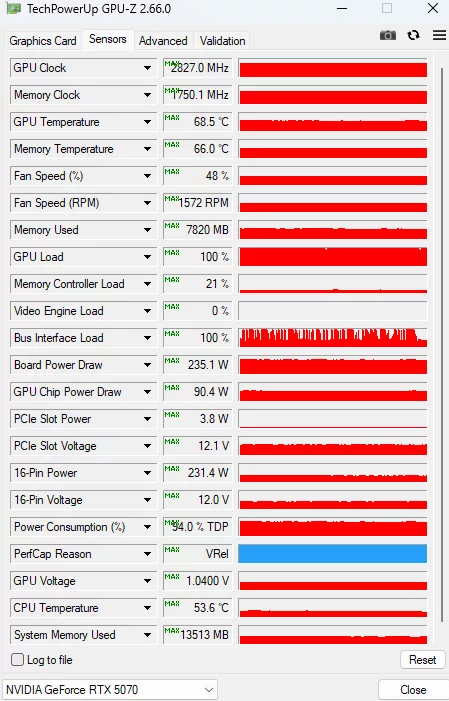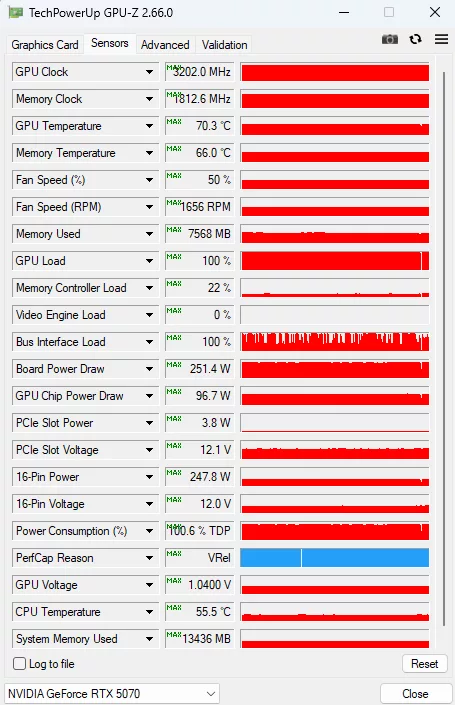Power, Temperature, and Fans
Power
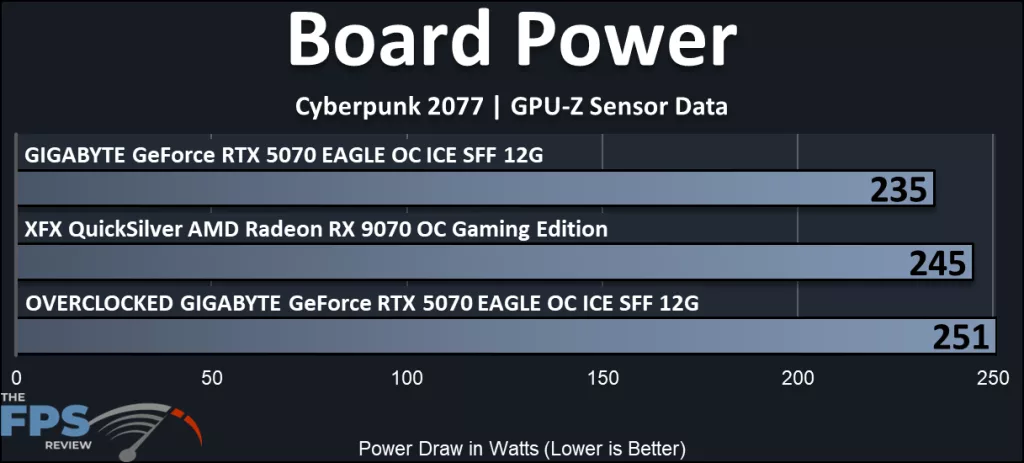
In this graph, we see that the overclocked GIGABYTE GeForce RTX 5070 EAGLE OC ICE SFF 12G has the highest power usage, but by a modest amount. We can also see that the default GIGABYTE GeForce RTX 5070 EAGLE OC ICE SFF 12G draws well under the specification for total power draw. The higher draw in overclocking is no doubt a result of the generous power limit increase of 20%. This would tend to imply there is more in the tank as far as overclocking goes.
Temperature
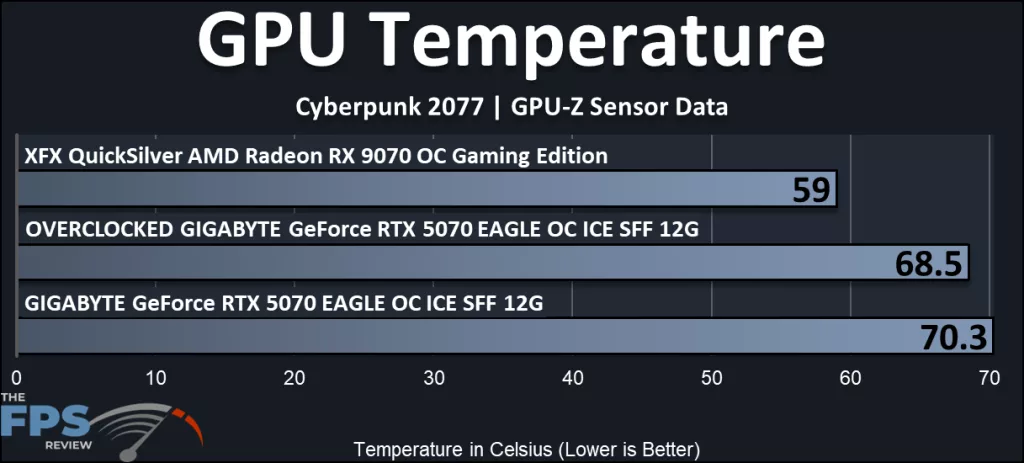
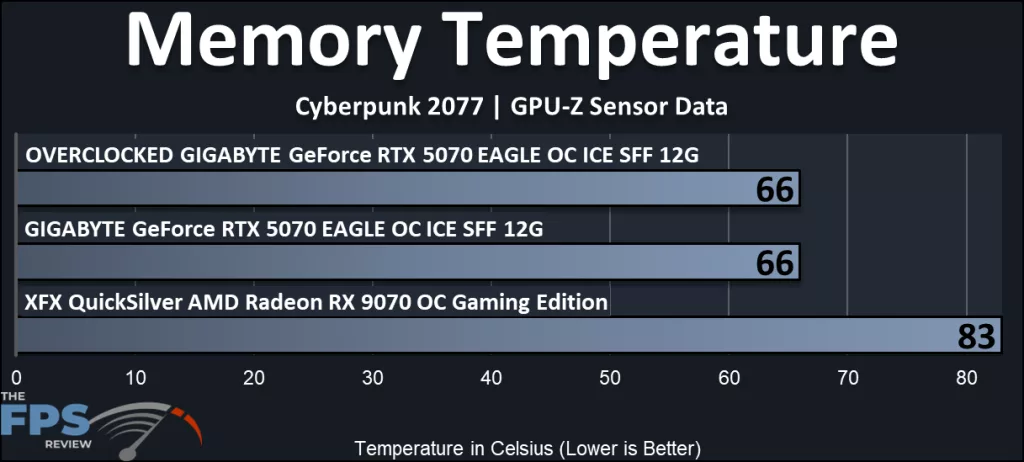
These two graphs demonstrate the very excellent cooling of both our video cards in this review. In default performance, the GIGABYTE GeForce RTX 5070 EAGLE OC ICE SFF 12G is a cool 68.5C but even that is eclipsed by the 59C of the XFX QuickSilver AMD Radeon RX 9070 OC Gaming Edition. Both of these cards have been designed with cooling as a priority. Overclocking does boost the temperature slightly, but still only to just above 70C. Memory temperatures are identical for the GIGABYTE GeForce RTX 5070 EAGLE OC ICE SFF 12G, whether overclocked or default. The XFX QuickSilver AMD Radeon RX 9070 OC Gaming Edition runs hotter, but also has more memory chips.
Fan Cycle
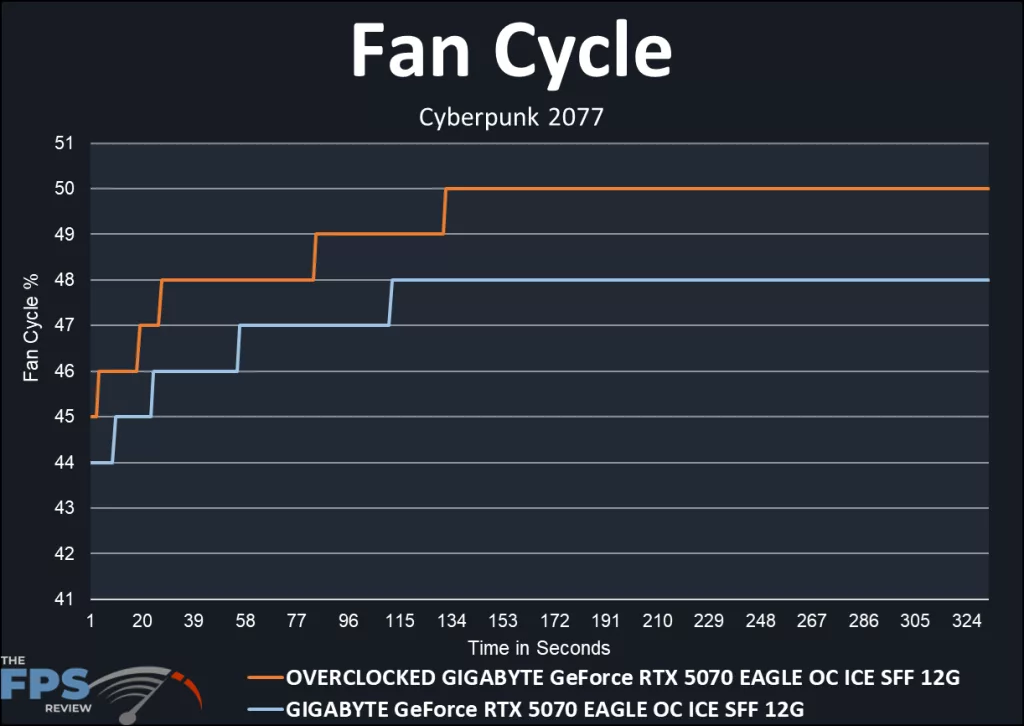
In this graph, you can see the fan ramp up in response to rising temperatures. The overclocked XFX QuickSilver AMD Radeon RX 9070 OC Gaming Edition requires 50% fans to run at 70.3C while the default card needs only 48% to run at 68.5C. The step-wise increases are nearly mirror images until they reach equilibrium. Even with the fans between 48 and 50% you simply cannot hear them on an open bench.
